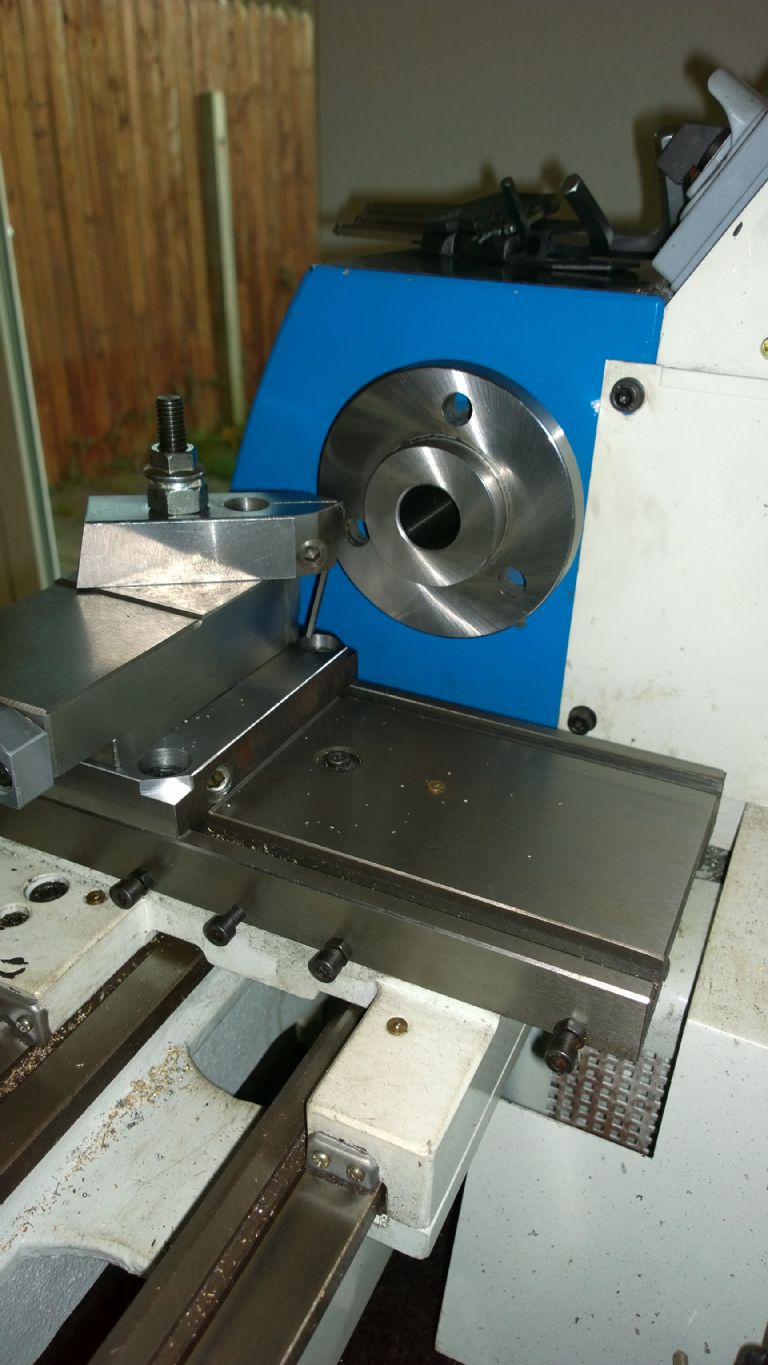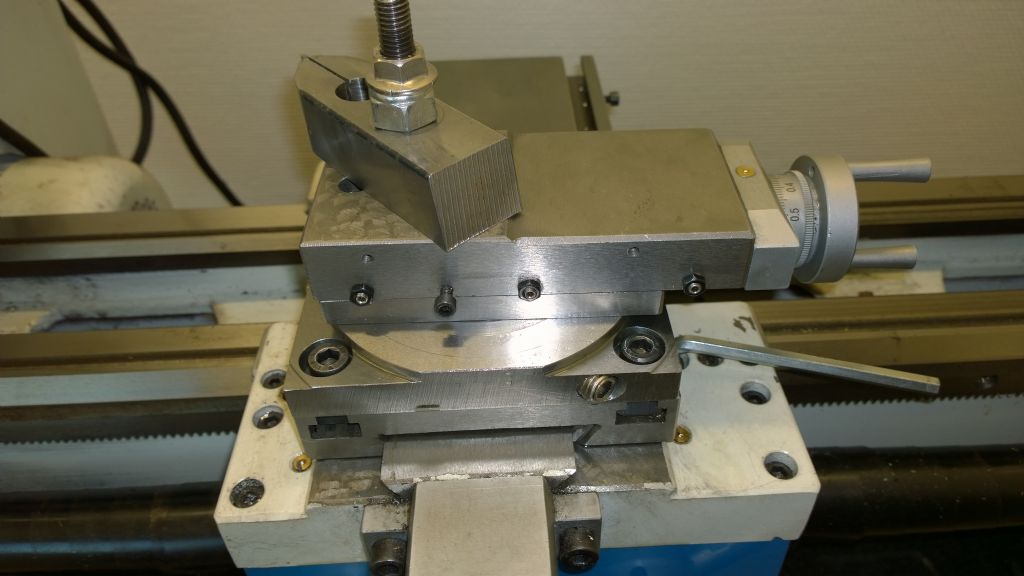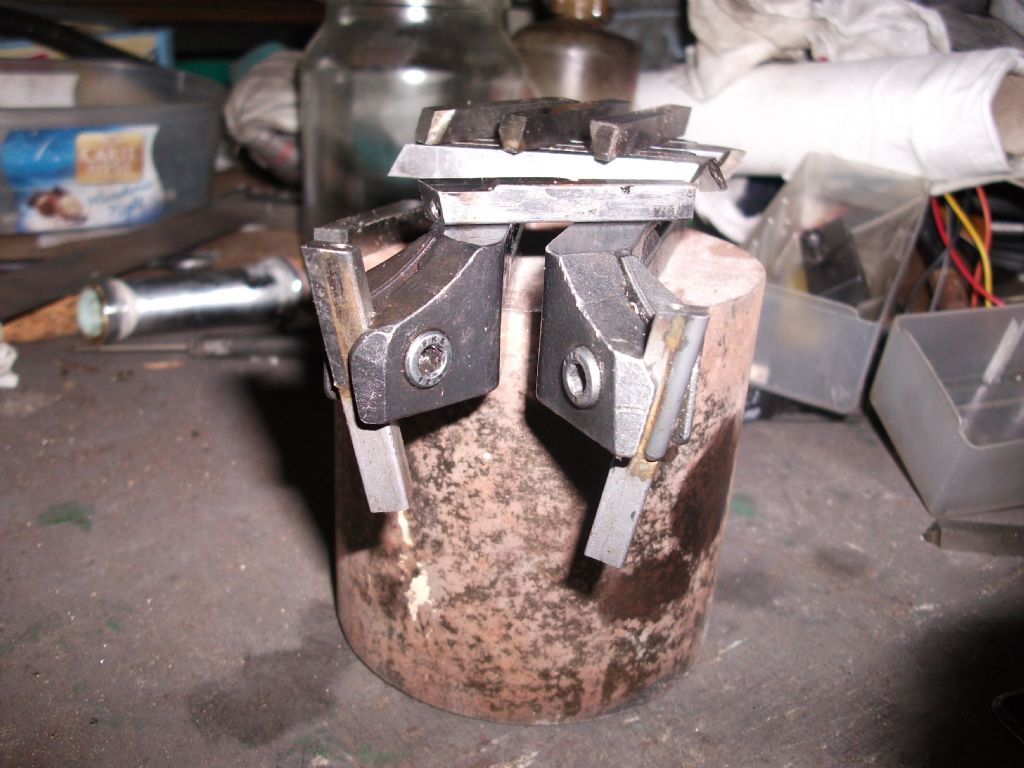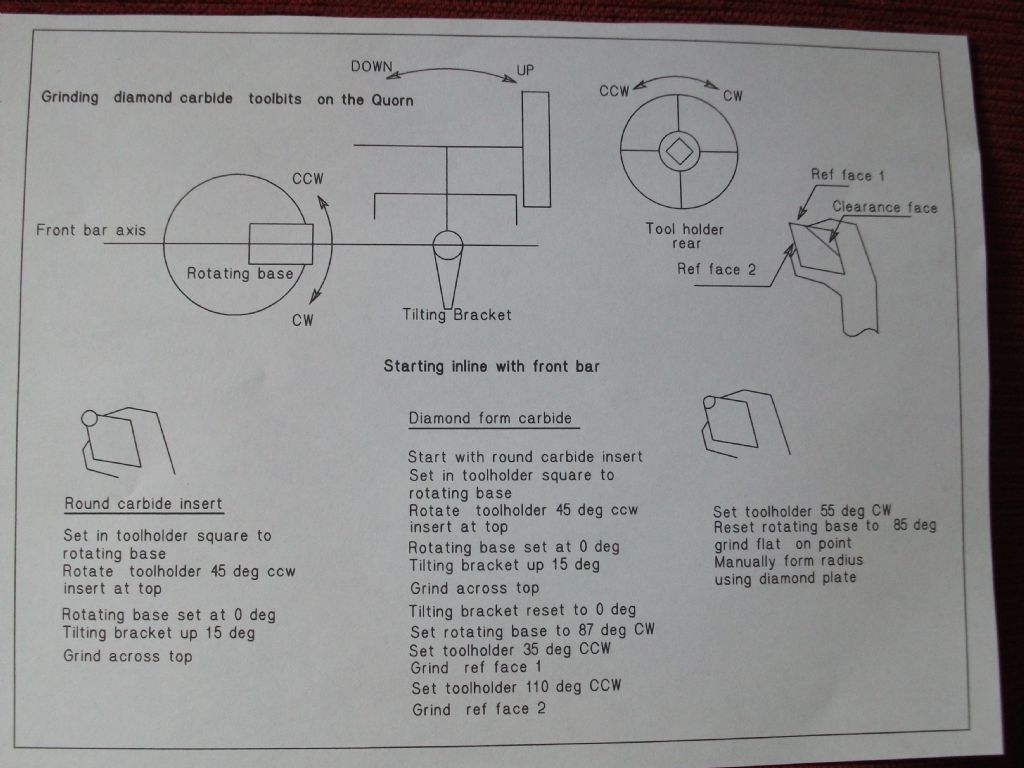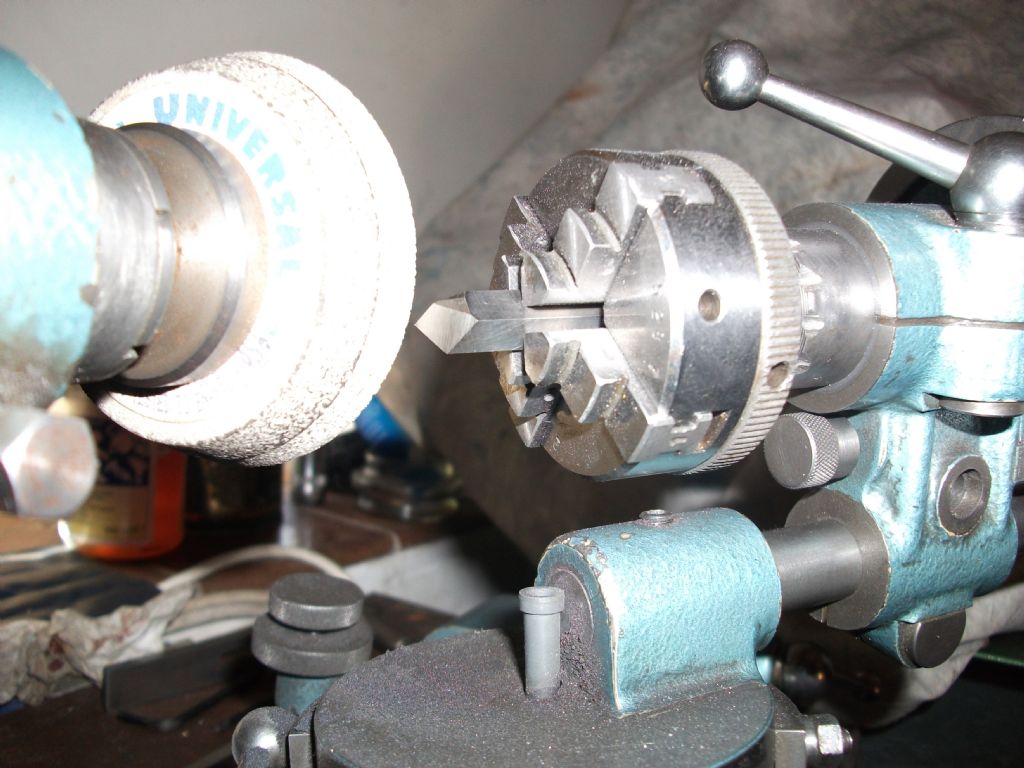Posted by Clive Foster on 20/01/2019 13:53:00:
ega
If downwards projection of the toolbit is an issue with tangential holders the simple answer is to switch to an Armstrong style!
As the video linked in the first post implies, but doesn't actually state, at the cutting edge tangential and armstrong tool holders are functionally identical devices. The only primary difference is that the armstrong bit requires two grinds for most tool shapes whilst the tangential bit gets away with one. If you have the grinding jig. The armstrong bit also consumes its cutting edge at every grind so it gets narrower and shallower over time whilst the tangential tool regenerates the edge in the same place with every grind. Of course an armstrong bit does not need a jig, although a simple angled fence can be helpful, and sharpening on the front of the wheel using the hollow ground method is trivially simple.
The real genius behind the Eccentric Engineering tangential toolholder was the realisation that the toolholder and uber simple sharpening jig combination added up to a price / performance / perceived value ratio corresponding to a successfully marketable product. Realising that there was also a touch of "new to this generation" novelty to provide serious marketing impact and keep the idea fresh was important too.
Well done that man. Seriously. Heck I almost bought one.
Fact is an equivalent simple, one universal angle, sharpening jig can be devised to use with armstong holders. With equally effective results given a simple half page instruction sheet explaining the hollow grind on front of the wheel method and how to hone the tool to keep it sharp. Possibly a footnote on packing up for various rake angles too. Which pretty much don't matter for the home shop guy so long as the thing is sharp and has some clearance.
But no one has ever made a go of a lathe tool sharpening jig for home shop guy. Southbend tried but theirs was too clever and too complex. Good tho'. Price / performance / perceived value being all wrong for a commercial product especially with everyone saying its dead easy to grind an ordinary tool. Which it is if you have someone to show you but un-mentored and working from books is a different matter if things don't click quickly. Especially if you don't know how much of a cut you ought to be able to peel off with a sharp tool. I've yet to see a written description of basic lathe tool sharpening that rates better than not very good from the solo novice viewpoint.
Doesn't help that the Americans never officially seemed to twig that the rocker in their obnoxious lantern tool posts is unnecessary when an armstrong is used. Simply roughly shim and change the tool bit projection for fine height adjustment. So the poor old armstrong system got tarred with the lantern brush.
Clive.
Edited By Clive Foster on 20/01/2019 13:54:32
As always, Clive is right on the money.
I have a Bison QCTP (Dickson clone with 19 holders) that is on my lathe 96% of the time. I have the original 4 way tool post that is used 1% of the time and a home made lantern tool post sans rocker holding an Armstrong holder for those awkward lack-of-space jobs or one-off tool bits for the other 3%.
As you can see, i find the lantern/Armstrong far more useful than the 4 way.
John P.






